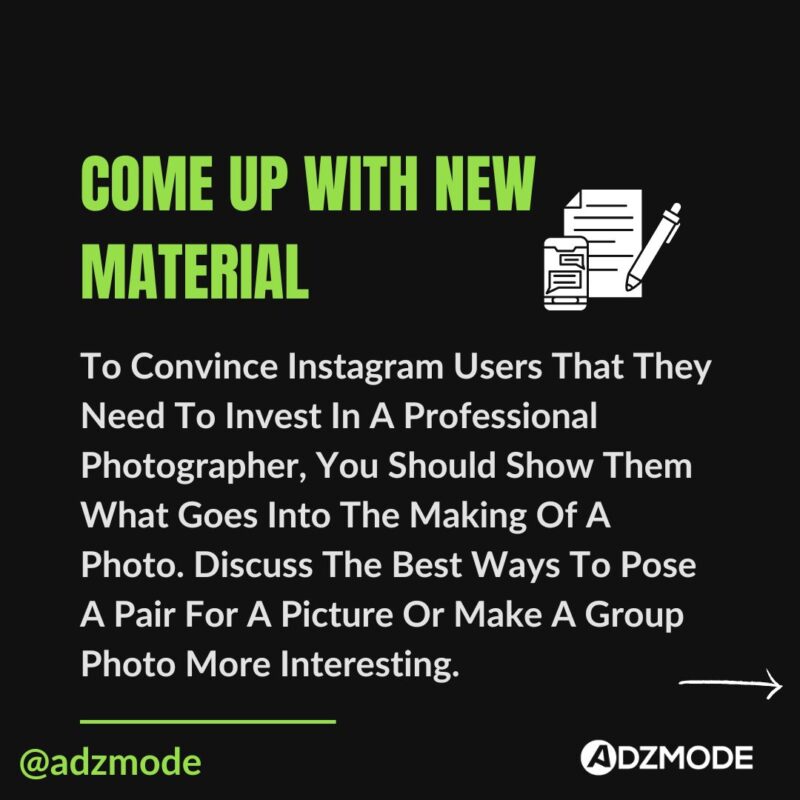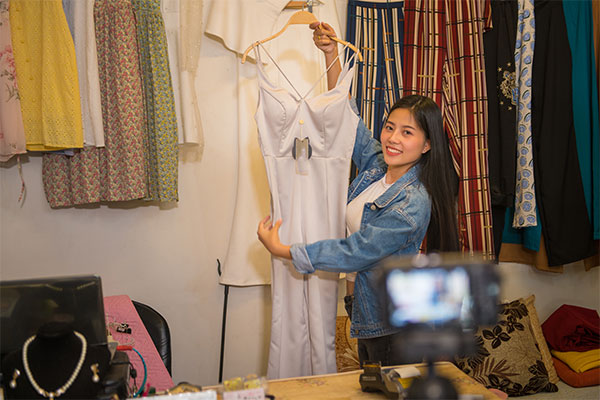
Let’s get real for a second. You started your boutique because you’ve got killer taste, an eye for fashion, and a passion for helping people look amazing. But here’s the thing—having beautiful clothes hanging on racks isn’t enough anymore. If people don’t know you exist, they’re not walking through your door or clicking “add to cart” on your website.
That’s exactly why digital marketing for every boutique has become non-negotiable. It’s not just for big brands with massive budgets anymore. Whether you’re running a cozy neighborhood boutique or an online fashion store, digital marketing is your ticket to getting discovered, building a loyal customer base, and actually making sales.
The Harsh Reality: Why Your Boutique Needs Digital Marketing Now
Picture this: Someone’s looking for a unique dress for a wedding. What do they do? They don’t drive around hoping to stumble upon your boutique. They pull out their phone and start searching. They scroll Instagram. They check Google. They ask their Facebook groups for recommendations.
If you’re not showing up in those digital spaces, you’re basically invisible. And invisible boutiques don’t survive.
Digital marketing for every boutique isn’t about following trends—it’s about meeting your customers where they already are. And trust me, they’re online. Like, all the time.
What Exactly Is Digital Marketing for Boutiques?
Before we dive deeper, let’s break down what we’re actually talking about. Digital marketing is essentially any marketing effort that uses the internet or electronic devices. For boutiques, this includes:
- Social media marketing (Instagram, Facebook, TikTok, Pinterest)
- Search engine optimization (SEO) to rank on Google
- Email marketing campaigns
- Paid advertising (Facebook ads, Google ads, Instagram promotions)
- Content marketing (blogs, styling tips, behind-the-scenes content)
- Influencer collaborations
- Online reviews and reputation management
The beauty of digital marketing for every boutique is that you can pick and choose what works for your specific business, budget, and goals. You don’t need to do everything—but you do need to do something.

Social Media: Your Boutique’s Best Friend
If there’s one area where digital marketing for every boutique really shines, it’s social media. Fashion is inherently visual, which makes platforms like Instagram and TikTok perfect for showcasing your pieces.
Think about it: Instagram is basically a digital storefront that’s open 24/7. You can post outfit photos, share styling videos, show behind-the-scenes glimpses of new arrivals, and connect directly with customers through DMs and comments.
Here’s what works:
- Consistent posting: Aim for 4-7 posts per week on your main feed
- Stories daily: Share new arrivals, customer features, polls, and day-in-the-life content
- Reels: Short, engaging videos get massive reach (we’re talking 10x more than regular posts)
- User-generated content: Repost customers wearing your pieces (with permission, of course)
- Shoppable posts: Tag products so people can buy directly from your posts
The algorithm rewards consistency and engagement, so showing up regularly makes a huge difference.
If managing all these platforms sounds overwhelming, partnering with the best social media marketing agency can transform your online presence without eating up all your time. The right agency understands fashion industry trends, knows what content converts followers into customers, and can handle everything from content creation to community management. This frees you up to focus on what you do best—curating amazing pieces and serving your customers—while experts handle your digital growth strategy.

Google Is Still King: Why SEO Matters
Social media is fantastic, but here’s something most boutique owners overlook: Google drives serious traffic and sales. When someone searches “boutique near me” or “vintage dresses in [your city],” you want to be at the top of those results.
That’s where SEO (search engine optimization) comes in. It’s all about making sure your website and online presence show up when people search for what you offer.
Key SEO strategies for boutiques:
- Local SEO: Claim your Google Business Profile and keep it updated
- Website optimization: Make sure your site loads fast, works on mobile, and has clear product descriptions
- Blog content: Write about fashion trends, styling tips, and seasonal guides
- Keywords: Use terms people actually search for (like “bohemian wedding guest dresses” or “sustainable fashion boutique”)
- Reviews: Encourage happy customers to leave Google reviews
SEO takes time—it’s not instant like paid ads—but it builds long-term visibility. And honestly, organic traffic from Google converts really well because people are actively searching for what you sell.
Email Marketing: The Money’s in the List
Here’s a stat that’ll blow your mind: email marketing has an average ROI of $36 for every $1 spent. That’s huge.
Why does digital marketing for every boutique always include email? Because you own your email list. Instagram could change its algorithm tomorrow, or TikTok could ban your account, but your email list? That’s yours forever.
Build your list by:
- Offering a discount for first-time subscribers
- Creating a “VIP early access” list for new arrivals
- Running contests and giveaways
- Providing style guides or lookbooks in exchange for emails
Then nurture that list with:
- Weekly or bi-weekly newsletters featuring new pieces
- Exclusive sales for subscribers
- Personalized product recommendations
- Birthday discounts
- Abandoned cart reminders
The key is being consistent without being annoying. Nobody wants daily promotional emails, but a weekly “what’s new” roundup? People love that.

Paid Advertising: Getting Results Fast
Organic growth is great, but sometimes you need to give things a boost. That’s where paid advertising comes in as part of your digital marketing for every boutique strategy.
Facebook and Instagram ads let you target super-specifically:
- Location (perfect for local boutiques)
- Age and gender
- Interests (fashion, shopping, specific brands)
- Behaviors (online shoppers, recent purchasers)
- Lookalike audiences (people similar to your existing customers)
You don’t need a massive budget. Start with $5-10 per day and test different:
- Ad creatives (images vs. videos)
- Audiences
- Messaging
- Offers (percentage off vs. free shipping vs. limited-time sales)
The data you collect from paid ads is gold. You’ll learn exactly what resonates with your audience, which helps inform your organic content too.
Content Marketing: Building Trust and Authority
When people think of digital marketing for every boutique, they often focus on selling, selling, selling. But here’s a secret: the best marketing doesn’t feel like marketing at all.
Content marketing is about providing value first:
- Style guides: “5 Ways to Wear a Slip Dress”
- Trend reports: “Spring 2025’s Biggest Fashion Trends”
- Behind-the-scenes: Your buying process, how you select pieces
- Customer spotlights: Featuring real customers and their style
- Sustainability stories: If you carry eco-friendly brands, talk about it
This type of content establishes you as more than just a store—you become a trusted fashion resource. People come back to you for inspiration, advice, and eventually, purchases.
Plus, this content works across multiple channels. That blog post about summer styling? It becomes an email newsletter, several Instagram posts, a YouTube video, and Pinterest pins.
The Power of Influencer Partnerships
Influencer marketing is huge for boutiques. And no, you don’t need to partner with celebrities or mega-influencers. Micro-influencers (10K-100K followers) and even nano-influencers (1K-10K followers) often drive better engagement and conversions.
Find influencers who:
- Align with your boutique’s aesthetic and values
- Have engaged followers (not just high follower counts)
- Already wear styles similar to what you carry
- Are located in or connected to your target market
Partnerships can include:
- Gifting pieces in exchange for posts
- Affiliate programs (they earn commission on sales)
- Paid collaborations for larger influencers
- Hosting events or styling sessions together
The authentic content influencers create often performs better than professional photoshoots because it feels real and relatable.
As your boutique grows and digital marketing becomes more complex, working with a specialized digital marketing company in India can provide expert guidance at competitive rates. Many Indian digital marketing agencies offer comprehensive services—from website development and SEO to paid advertising and analytics—with teams that understand global fashion markets. They bring technical expertise, creative strategies, and data-driven insights that help boutiques scale efficiently. With round-the-clock service and cost-effective solutions, these partnerships allow boutique owners to access enterprise-level marketing capabilities without breaking the bank.

Building Your Brand Story Online
Here’s what separates successful boutiques from struggling ones: story. People don’t just buy clothes—they buy into brands they connect with emotionally.
Your digital marketing for every boutique strategy should tell your story consistently across all platforms:
- Why did you start your boutique?
- What’s your selection philosophy?
- Who are you helping, and how?
- What values drive your business?
Share this story through:
- Your “About” page that actually sounds human
- Instagram stories showing your daily life
- Email newsletters with personal notes
- Video content introducing yourself and your team
When customers feel connected to you and your story, they become loyal. They choose you over Amazon or fast fashion chains because they’re supporting something they believe in.
Analytics: Measuring What Matters
One of the biggest advantages of digital marketing for every boutique is that everything is trackable. You can see exactly what’s working and what’s not.
Key metrics to watch:
- Website traffic: How many people are visiting? Where are they coming from?
- Conversion rate: What percentage of visitors actually buy?
- Social media engagement: Likes, comments, shares, saves
- Email open and click rates: Are people reading your emails?
- Customer acquisition cost: How much do you spend to get each new customer?
- Lifetime customer value: How much does each customer spend over time?
Tools like Google Analytics, Instagram Insights, and email marketing platforms give you all this data. The trick is actually using it to make decisions.
If Instagram Reels are driving tons of traffic but Facebook posts aren’t, guess where you should focus your energy? If email campaigns about new arrivals convert better than sale announcements, that tells you something about your audience.
Common Digital Marketing Mistakes Boutiques Make
Let’s talk about what not to do, because I’ve seen boutiques make these mistakes over and over:
- Being inconsistent: Posting three times one week, then disappearing for a month kills momentum. Consistency beats perfection every time.
- Ignoring engagement: If someone comments on your post or DMs you, respond! Social media is social—it’s a conversation, not a broadcast.
- Poor quality photos: You’re selling fashion. Blurry, poorly lit photos make even gorgeous pieces look cheap. Invest in decent photography.
- No clear call-to-action: Every post should tell people what to do next—”Shop now,” “DM for details,” “Click the link in bio.”
- Forgetting mobile users: Most people browse on their phones. If your website looks terrible on mobile or takes forever to load, you’re losing sales.
- Trying to be everywhere: Better to rock Instagram and email than to half-ass five different platforms.
Creating a Digital Marketing Budget
Let’s talk money because I know you’re wondering: “How much does digital marketing for every boutique actually cost?”
The truth? It varies wildly based on whether you DIY or hire help, your goals, and your market.
Here’s a basic breakdown:
- DIY approach: $200-500/month (tools, stock photos, small ad budget)
- Hybrid approach: $800-2,000/month (some professional help, larger ad budget)
- Full-service approach: $3,000-10,000+/month (agency management, comprehensive strategy)
Most boutiques start with the DIY approach and scale up as they grow. The key is consistency—a small budget used consistently beats a big budget used sporadically.
Allocate your budget roughly like this:
- 40% content creation (photography, graphics, copywriting)
- 30% paid advertising
- 20% tools and software (scheduling apps, email platforms, design tools)
- 10% education and testing new strategies
Getting Started: Your 90-Day Action Plan
Feeling overwhelmed? Here’s a simple roadmap for implementing digital marketing for every boutique:
Days 1-30: Foundation
- Set up or optimize all social media profiles
- Create a Google Business Profile
- Build an email list signup on your website
- Plan your content themes and posting schedule
- Take professional photos of key pieces
Days 31-60: Content Creation
- Post consistently (at least 5x per week on Instagram)
- Send your first email newsletter
- Start a blog with 2-3 styling posts
- Engage with local hashtags and accounts
- Collect customer testimonials and photos
Days 61-90: Growth
- Launch your first small ad campaign ($5-10/day)
- Reach out to 5-10 micro-influencers
- Create a referral program for existing customers
- Add shoppable features to your social posts
- Analyze your data and adjust what’s not working
This isn’t everything, but it’s enough to build real momentum. Remember, digital marketing for every boutique is a marathon, not a sprint.
The Future Is Digital (Whether You Like It or Not)
Look, I get it. You became a boutique owner to work with beautiful clothes and help people feel confident, not to become a digital marketer. But here’s the reality: the boutiques that thrive in the next five years will be the ones that embrace digital marketing.
The good news? You don’t have to do it all yourself. You can learn the basics, hire help for specific areas, or partner with agencies that specialize in fashion retail. What matters is recognizing that digital marketing for every boutique isn’t optional anymore—it’s essential.
Your boutique is unique. Your style is special. Your customer service is personal. Digital marketing just helps more people discover all the amazing things you’re already doing. It amplifies your voice, extends your reach, and yes—it drives sales.
So take that first step. Post that Instagram Reel. Send that email newsletter. Run that small ad campaign. Start building your digital presence today, because your next best customer is out there right now, scrolling through their phone, waiting to discover you.
social media strategies for fashion brands
Frequently Asked Questions (FAQs)
Q. Why is digital marketing important for small boutiques?
Digital marketing for every boutique is crucial because it levels the playing field with larger retailers. It allows small boutiques to reach targeted audiences, build brand awareness, and drive sales without massive advertising budgets. Most importantly, it meets customers where they spend their time—online. With 87% of shoppers beginning their product searches online, boutiques without digital presence are invisible to potential customers.
Q. What’s the most effective digital marketing channel for boutiques?
Instagram typically delivers the best results for fashion boutiques due to its visual nature and shopping features. However, the “best” channel depends on your target audience. If you’re targeting younger customers (Gen Z), TikTok is essential. For established professionals, Facebook and email marketing work well. The most effective strategy uses multiple channels that work together—Instagram for discovery, email for nurturing, and your website for conversions.
Q. How much should a boutique spend on digital marketing?
Small boutiques should allocate 7-10% of gross revenue to marketing, with at least half dedicated to digital efforts. Starting out, you might invest $300-500 monthly for DIY digital marketing (tools, small ad budgets, stock photos). As you grow, scale to $1,000-3,000 monthly for professional support. The key is consistency—$300 spent consistently beats $1,000 spent sporadically.
Q. Can I do digital marketing myself, or do I need to hire help?
You can absolutely start with DIY digital marketing for your boutique. Begin by managing your own social media, email marketing, and basic SEO. As your business grows and your time becomes more valuable, consider outsourcing specific tasks—content creation, ad management, or website optimization. Many successful boutique owners handle social media personally (for authentic voice) while hiring help for technical aspects like SEO and paid advertising.
Q. How long does it take to see results from digital marketing?
Paid advertising can drive immediate results—you might see sales within days. However, building sustainable organic presence takes 3-6 months of consistent effort. SEO typically requires 6-12 months to show significant ranking improvements. Email marketing shows results within the first month. The key is setting realistic expectations—digital marketing for every boutique is about building long-term presence, not just quick wins.
Q. What content should my boutique post on social media?
Mix these content types: 40% product showcases (styled flats, on-model shots, detail photos), 30% educational content (styling tips, trend reports, how-to-wear guides), 20% behind-the-scenes (new arrivals unboxing, your selection process, day-in-the-life), and 10% promotional (sales, special offers, events). Always prioritize quality over quantity, and ensure your content reflects your brand’s unique personality.
Q. How do I measure digital marketing success for my boutique?
Track these key metrics: website traffic and its sources, social media engagement rate (not just follower count), email open and click-through rates, conversion rate (visitors who actually buy), customer acquisition cost, and return on ad spend (ROAS). Use free tools like Google Analytics and built-in social media insights. Success means seeing steady growth in these numbers over time, not overnight explosions.
Q. Should my boutique have a blog?
Yes, but only if you can commit to regular publishing (at least 2-4 posts monthly). Blogs boost SEO, establish expertise, and provide content to share on social media and email. Write about styling tips, seasonal trends, fashion advice, and behind-the-scenes stories. Each blog post should be 800-1,500 words, include relevant keywords naturally, and offer genuine value—not just sales pitches.
Q. How often should I post on social media for my boutique?
Instagram: 4-7 feed posts weekly, plus daily Stories and 3-4 Reels per week. Facebook: 3-5 posts weekly. TikTok: 3-5 videos weekly. Pinterest: 5-10 pins daily. However, consistency matters more than frequency—it’s better to post three times weekly consistently than post daily for two weeks then disappear for a month. Find a sustainable schedule and stick with it.
Q. What’s the biggest mistake boutiques make with digital marketing?
The biggest mistake is inconsistency. Boutiques often start strong, post enthusiastically for a few weeks, then get busy and abandon their digital presence for months. This confuses algorithms and loses audience trust. The second biggest mistake is being too sales-focused—every post being “buy this” turns followers off. Balance promotional content with value-driven content that educates, inspires, or entertains your audience.
Share Your Project Requirements With Us






